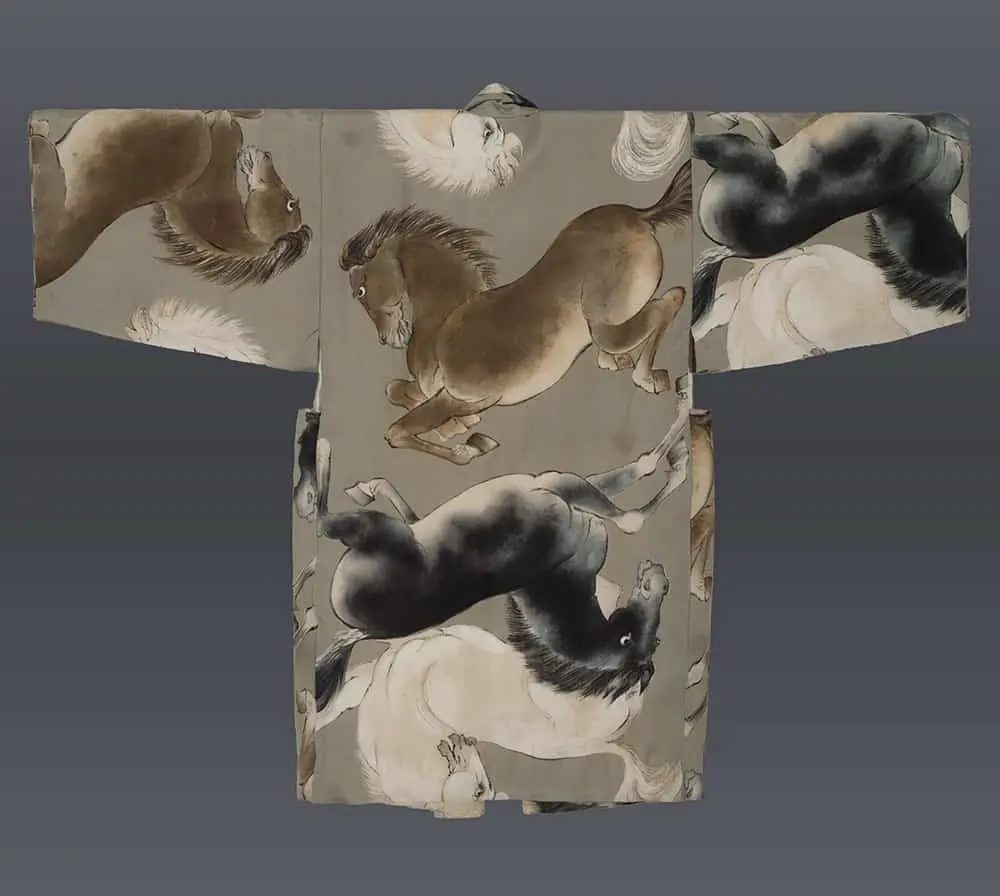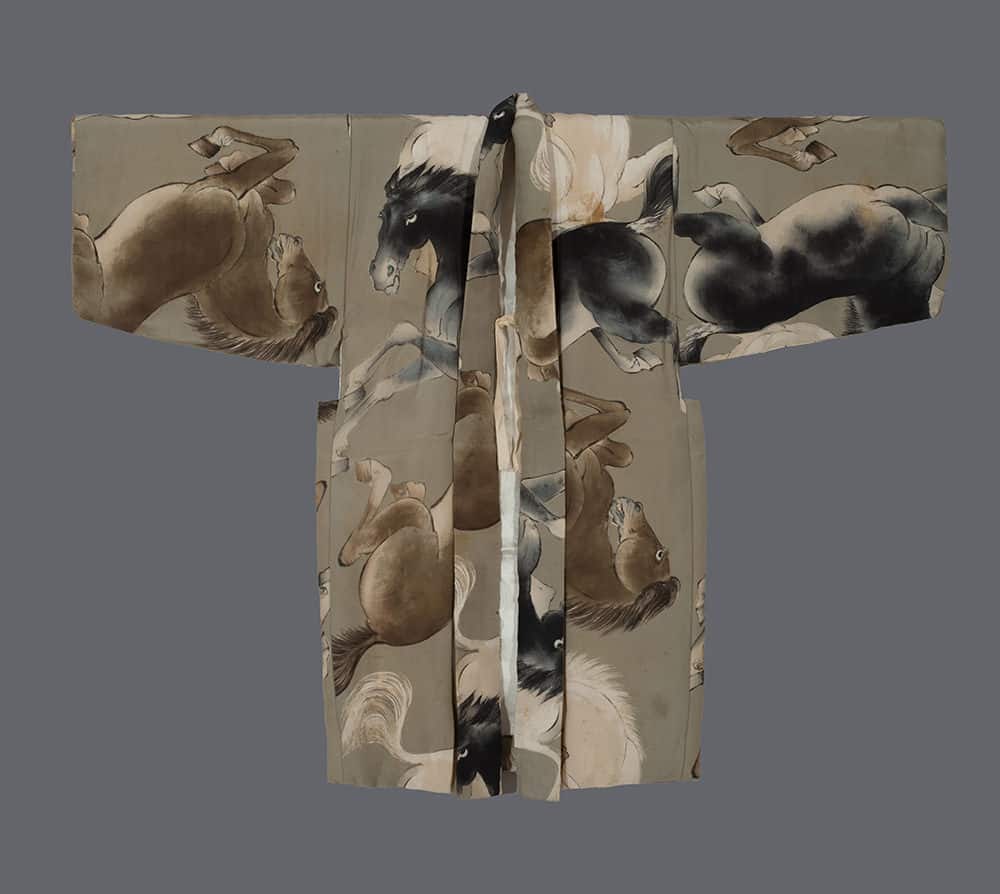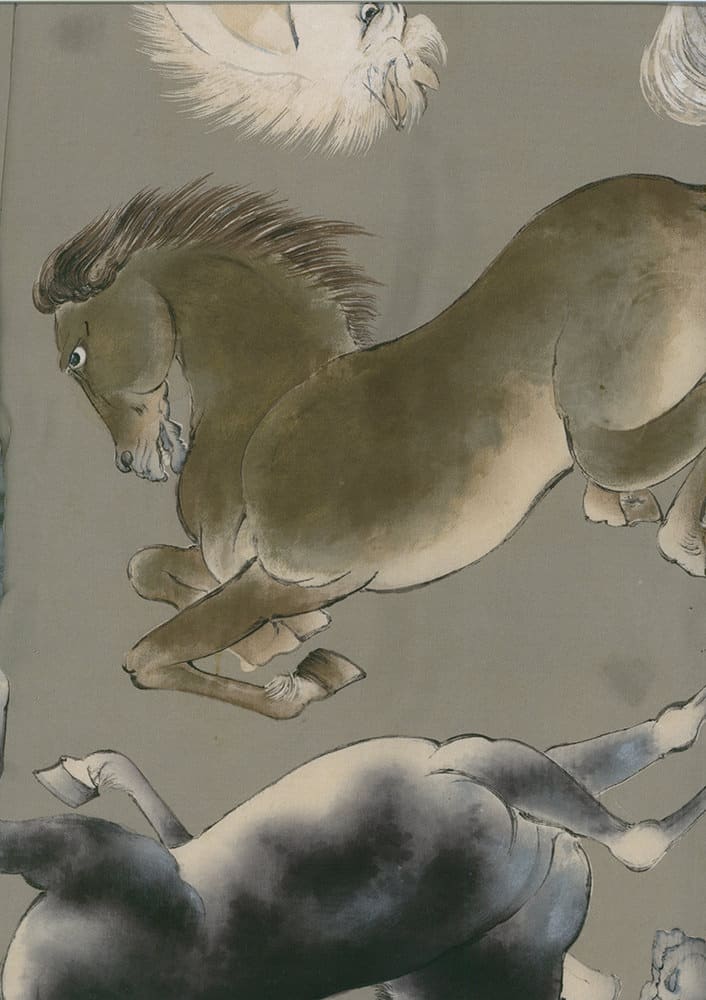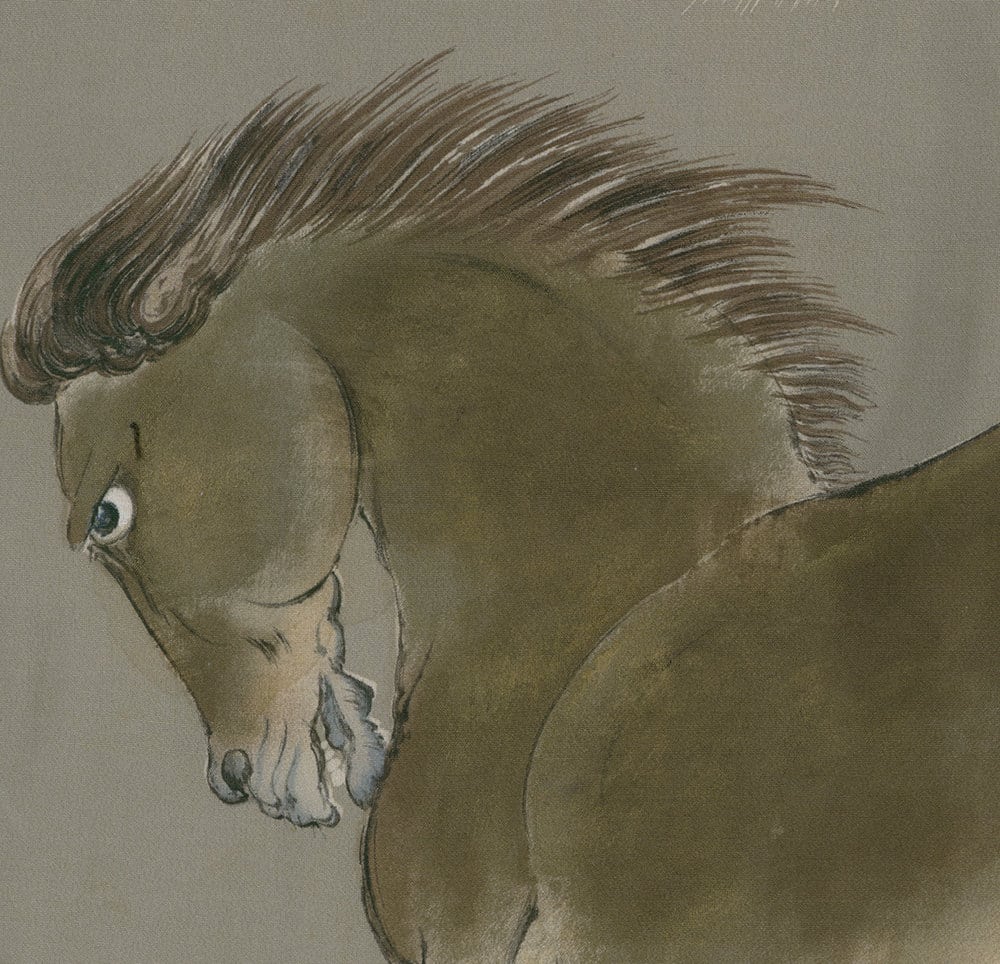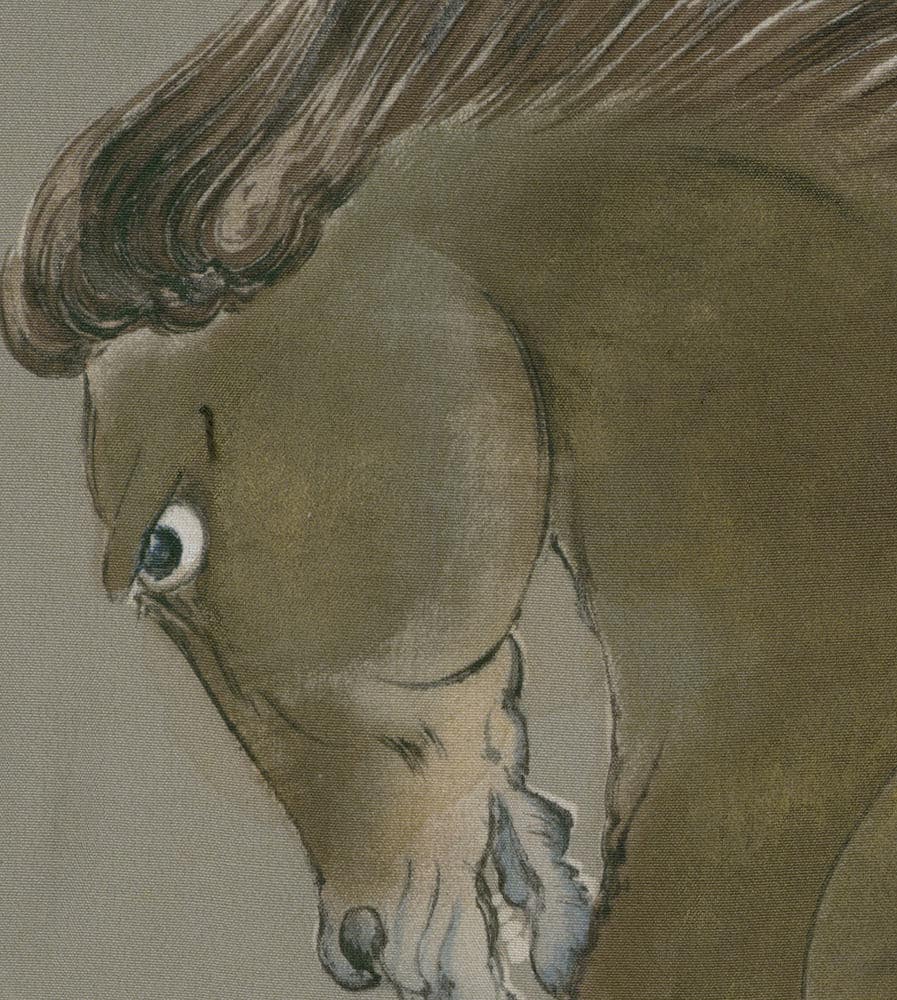This charming boy's kimono design features a delightful collection of horses rendered in various poses and colorations against a soft, neutral background.
The artistic technique combines stenciling (katazome) with hand-painted details, creating depth and individuality in each horse figure. The horses are depicted in different colors - rich browns, dramatic black and white piebalds, and cream tones - each with carefully observed anatomical details and expressive personalities. The artists have captured the horses in naturalistic poses: some grazing, others standing alert, and several in dynamic movement.
The brushwork shows particular skill in the rendering of the horses' manes and tails, which flow with graceful, calligraphic strokes that demonstrate the influence of traditional Japanese painting techniques. The black and white pinto horses are especially striking, with their bold contrast creating visual anchors throughout the composition.
The scattered placement of the horses across the garment creates a sense of movement and playfulness appropriate for a child's clothing, while the sophisticated execution reflects the high standards of Taisho period textile arts. The neutral, warm beige background allows the horses to stand out prominently while maintaining an overall harmonious color scheme.
This type of animal motif was popular for boys' clothing, as horses symbolized strength, nobility, and good fortune in Japanese culture. The combination of stencil work for the basic forms with freehand painted highlights represents an efficient yet artistic approach that allowed for both consistency and individual character in each motif.
It measures 46 inches (117 cm) from sleeve-end to sleeve-end and stands at a height of 46 inches (117 cm).
.avif)

